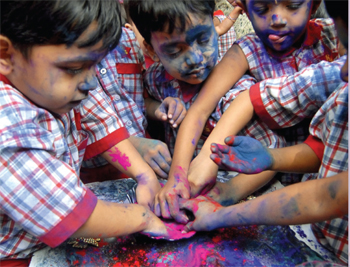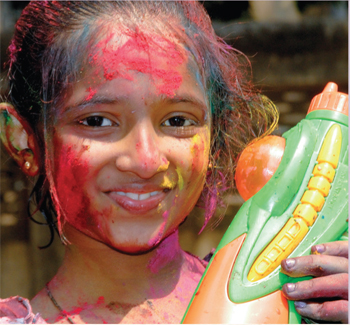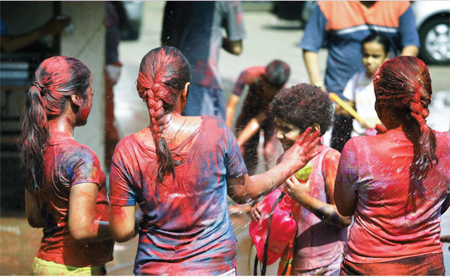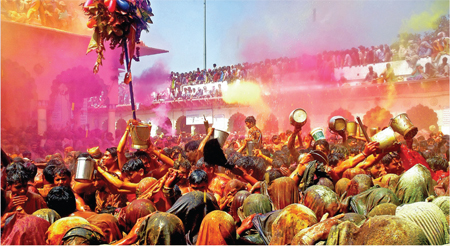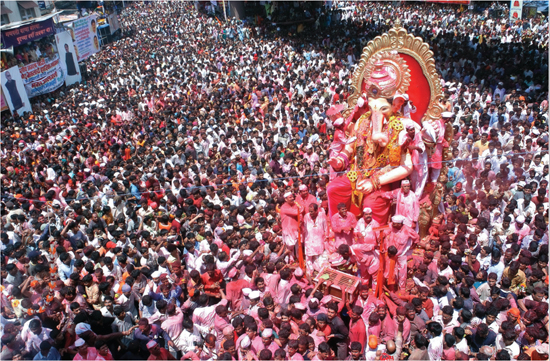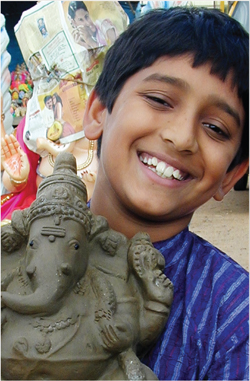HOLI celebrates the victory of the devout child Prince Prahlada over the demoness Holika. It falls on the last full moon of February/March. It begins with bonfires in the evening and is followed the next day by the smearing of one and all with colored powders and splashing with colored water.§
 “You’re sure we won’t get in trouble for this?” Kindergarten children pick up handfuls of powder to smear on each other.§
“You’re sure we won’t get in trouble for this?” Kindergarten children pick up handfuls of powder to smear on each other.§
 A variety of children’s water guns are put to colorful use upon family and friends during Holi.§
A variety of children’s water guns are put to colorful use upon family and friends during Holi.§
 These teens are targeting each other, but any bystander, including complete strangers, could be next.§
These teens are targeting each other, but any bystander, including complete strangers, could be next.§
 A temple courtyard is deluged with colored water and powders as hundreds of devotees play Holi.§
A temple courtyard is deluged with colored water and powders as hundreds of devotees play Holi.§
This biggest festival of the year is celebrated across India and everywhere Hindus live in the world today. It is held in October-November. Oil lamps are lit and placed in and all around the home, new clothes put on and gifts exchanged. In parts of India it also marks the beginning of the New Year. Various stories are told of its origins, all involving the victory of light over darkness, good over evil.§
Ganesha Chaturthi is held in August/September. The boy at right has purchased a clay murti of Ganesha which he will paint and keep on the family home altar. In Mumbai huge Deities are built, paraded through the streets and on the final day immersed in the ocean.§
- List: Name major festivals from other religions and show what they have in common with Hindu festivals.
- Discuss: Why do you think lamps, candles, fireworks and bonfires are a part of many festivals?
- Explain: How does a festival such as Holi help keep people on good terms with each other?
- Evaluate: Do you think the celebration of religious festivals benefits the community? Why or why not?

